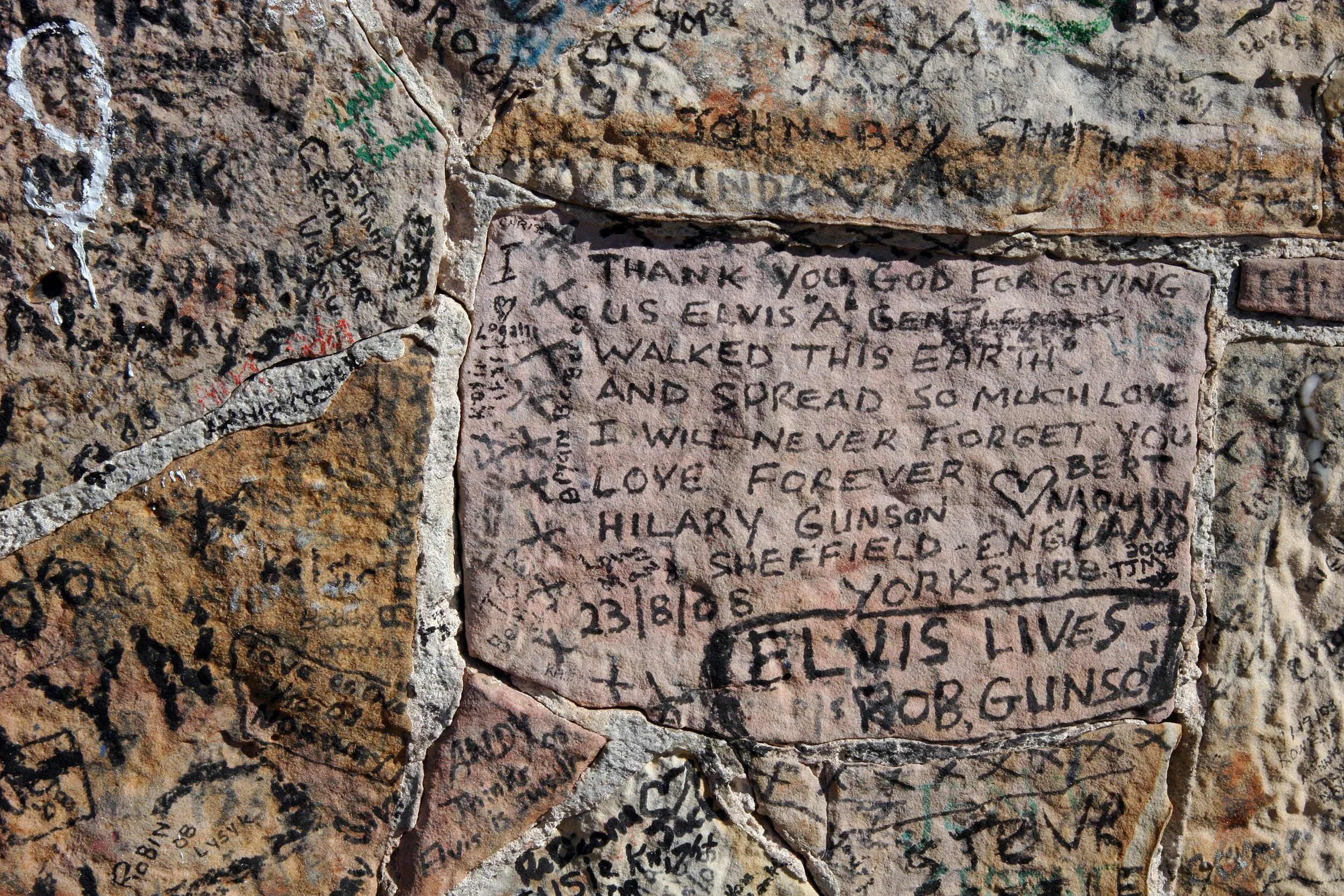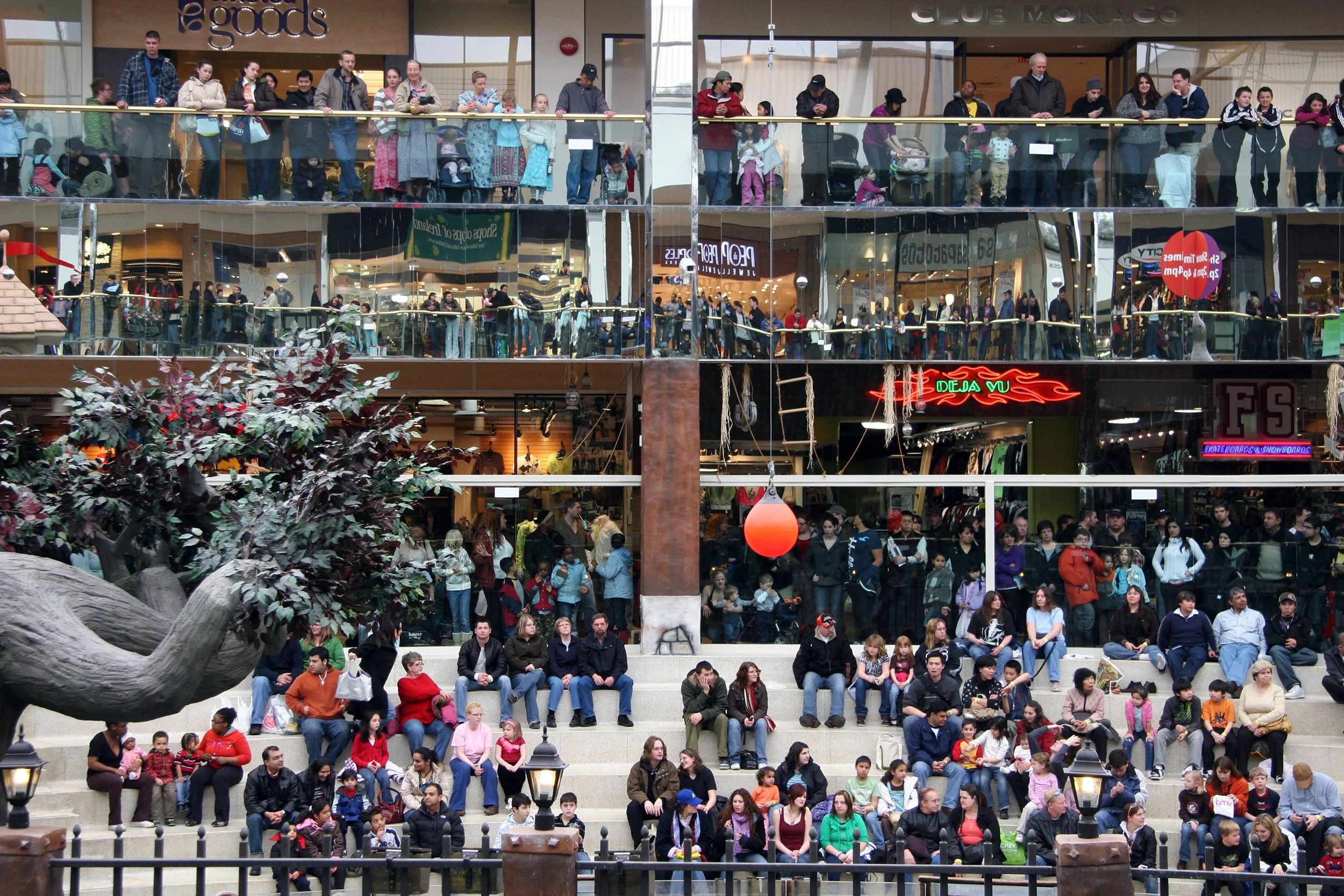
Page 4 of 7
Memphis, Tennessee
Subpoened in Texas, sequestered in Memphis
Pictured immediately below is the brick wall in front of Graceland in Memphis, Tennessee where poor boys and pilgrims with families (and I) can stand right there on Elvis Presley Boulevard and (apparently) write whatever message we would like to all over the wall. I chose not to write anything (primarily because I forgot to bring a black sharpie pen or some white out), although if I did it would probably be something like more about me than about Elvis. I also chose to not spend my limited time in Memphis re-touring the jungle room (I last visited some 14 years ago) but instead decided to head downtown and into (for me at least) uncharted waters.
A few blocks south of downtown and Beale Street is the National Civil Rights Museum at the site of the preserved Lorraine Motel, the site of the assassination of Martin Luther King, Jr. The museum was built behind the motel and covers the history of African Americans from the colonial days right through until 1968 and the assassination. Exhibits and artifacts in the museum are certainly interesting, but the real draw is the site itself. The circulation and timeline inside ends at the neighboring motel room to the one that King stayed in, one which offers a glass wall view into the preserved room (ashtrays and all) and right on out to the balcony and to destiny.
And while the exhibits at and behind the Lorraine Motel speak about civil rights, across the street is another museum which is all about the assassination. The boarding house where James Earl Ray shot King is now preserved to give you the assassin's eye view as well as to explain chronologies, conflicts and conspiracies associated with King's murder. Equally fascinating although seriously weirder than what you just learned all about at the Lorraine Motel right across the street.
The other famous hotel in town is decidedly more upscale and is known for something far more pleasant than a murder of a civil rights leader. The Peabody Hotel features a daily ritual where hotel guests and total strangers (like me, I stayed at the Westin) gather twice a day to watch some ducks either jump in or out of the lobby fountain. The whole pageant is fairly well done. First a caretaker in a top hat speaks about the tradition, then a little tiny staircase is put up against the fountain, then the caretaker gathers up the ducks and then they run like hell down a red carpet and into a reserved elevator. From there they disappear to their rooftop chateau and do whatever it is that ducks do overnight as they wait for the next morning and their next show. Quack.
My time in Memphis (just like my time everywhere) was limited but I still did at least get a chance to walk around downtown a bit. Between the Lorraine, the Peabody, Beale Street and some damn crazy looking homeless people I was lucky enough to stumble on an installation by artist and wannabe architect Vito Acconci. Consisting of two areas with public benches connected by a shiny metal clad structure, the piece was surprisingly nice. At times it disappeared into the clouds, at other times it reflected the city, at others it looked like a monster ready to attack. What more can you ask for?
While the nearby(ish) city of Little Rock was certainly reasonable and interesting and accommodating enough on its own, the major (or possibly only real) attraction the city has to offer is just east of downtown on the other side of all of those hard to miss interstate overpasses. The (William Jefferson) Clinton Presidential Library sits on a well landscaped piece of riverside property that overlooks the aptly named Arkansas River and feels somewhat removed from the growing urbanism of the city and its nearby river market district. The building (designed by James Stewart Polshek) was supposedly based on Clinton's campaign theme of a bridge to the 21st Century, although it's a bit of a stretch if you ask me. The building does engage the river (and nearby real bridge) with a horizontal, reflective form and a massive cantilever that projects north toward the river and North Little Rock, or I north toward the 21st Century, whichever you prefer.
The building was designed by James Stewart Polshek, the guy who designed the Hayden Planetarium (the big sphere in a glass box), the Standard Hotel (the showstopper over Gansevoort Market), the NY Times Printing Plant (you know, the one by the Whitestone Expressway), Washington DC's Newseum and the guy who spoke at at least one one of my graduations. The design (despite any weak literal references) is simple but also extremely well executed. A horizontal building with a dramatically cantilevered end all clad with a screen of patterned and reflective glass panels that reflect the sun and the clouds and the sky (in no particular order).
Inside there is the prerequisite Oval Office (a feature at three of the four Presidential Libraries I have visited in the past year), an extremely well produced introductory video and a wing of the actual physical archives (in Presidential blue boxes) featuring well designed exhibits and a collection of rather odd artifacts. Through the center of this wing is a cleverly designed timeline that features year by year facts on one side and little vitrines on the other side with a collection of generally personal correspondences between the White House and everyone from the Dalai Lama to less important people like Sheryl Crow and the late Dom DeLuise, an American citizen who owned his own house (see below).
Looking through the glass, the open gap and the patterned glass again and right on to the skyline of downtown Little Rock. The building's interior (unlike most other Presidential Libraries) is directly visibly connected to the outside world, its glass and patterned glass screen walls are directly and constantly visible from literally everywhere in the museum, discounting the theatre and washrooms. The effect is rather spectacular, especially when combined with the consistently excellent exhibit design by Ralph Applebaum Associates (exhibit designers of the US Holocaust Museum, The Newseum and a firm I once briefly collaborated on an unrealized project with). And while there really isn't all that much to see (the well done exhibits are not exactly comprehensive), it may be the only museum building in the United States without a gift shop, a welcome addition, or lack thereof.

